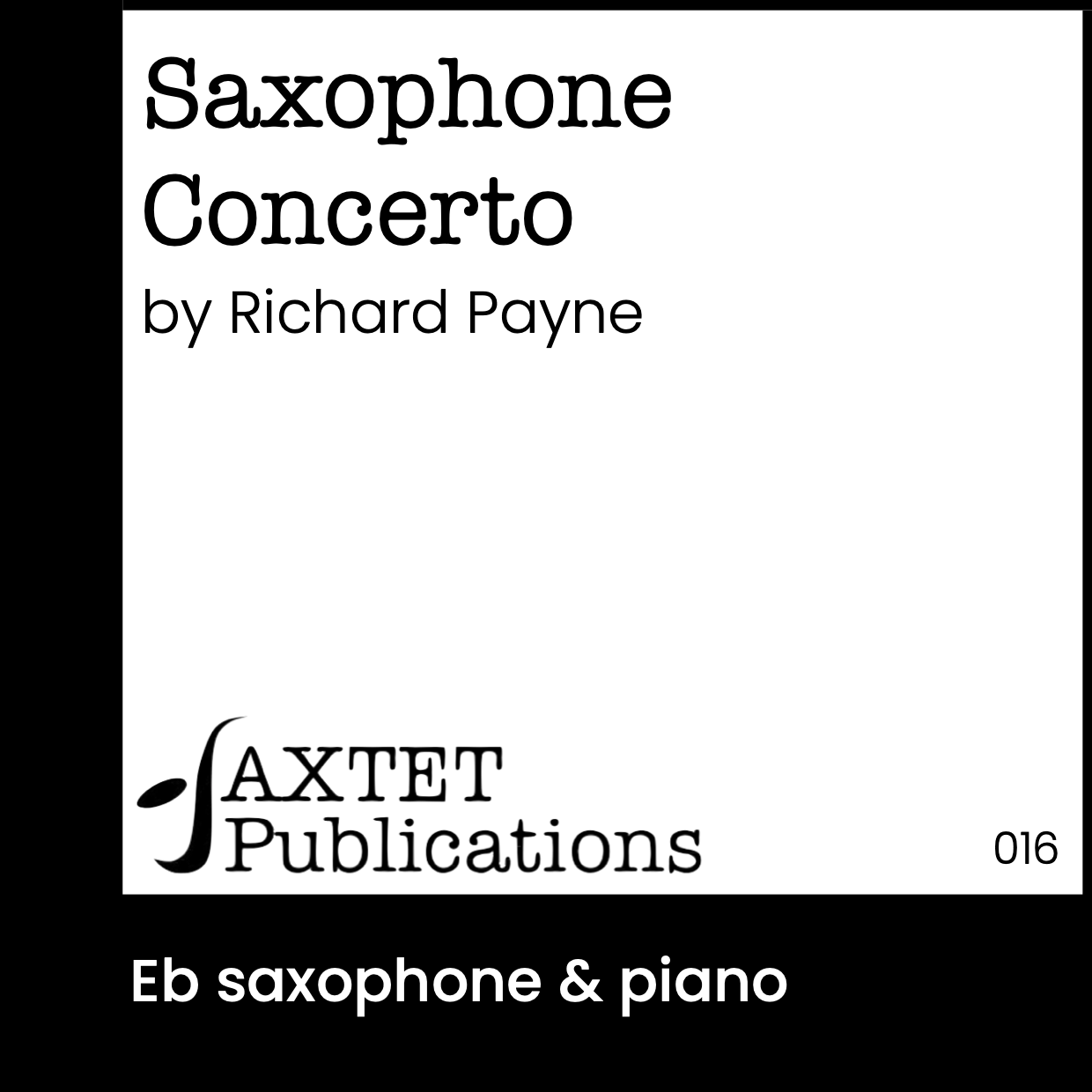
Sample of saxophone ensemble version of "Concerto" with Catherine Evison (alto saxophone), from the National Saxophone Choir album "Sax to the Max!".
£14.99
This concerto runs as one continuous piece but with a three-movement plan: Fast – Slow – Fast.
After an introduction and saxophone cadenza, the first main theme is introduced. Three principal motifs feature in the first movement, and are subsequently developed throughout the Concerto, binding the three movements together. The first movement has an energetic but melodic character, the second a mood of tranquility, and the third and final movement is distinctive for its pulsating rhythmic drive. A coda section ends the piece, using material from all three movements, modified to deliver a climactic finish.
This piano reduction of the original, orchestral version of the Saxophone Concerto is suitable for use as a rehearsal version of the orchestral work, but minor amendments have been introduced so that it stands alone and can be performed as a work in its own right.
The E-Edition PDF bundle includes an Eb saxophone part and piano accompaniment.
“Saxophone Concerto” is also available in hard-copy from June Emerson Wind Music.
Saxtet Publications
8 Manfield Way
Northampton
NN3 6NA
UK
tom.saxtet –
A substantial and exciting new addition to the repertoire. This piano reduction is very useful for rehearsal purposes or for performance in its own right. It is one continuous piece but with the usual three movement plan: the first movement has an energetic but melodic character, the second – a mood of tranquillity, followed by the third with its pulsating rhythmic drive. (Grade 8)
Music News, Wood Wind & Reed, May 2002
tom.saxtet –
I like this piece because it’s fun to play and is unpretentious. It is virtuosic, being at least grade eight standard as well as being witty and quite tricky to play. It is perfect for music college exams. It is certainly in a lighter style but so are Ronald Binge and Eric Coates. Unlike some transcriptions like Glazunov, which is dire for sax and piano, this one actually works. It is in one movement but does have several different sections. I would encourage saxos to play the orchestral version if they get a chance because it is very entertaining calling-card for the instrument.
Gerard McChrystal – Clarinet & Saxophone Magazine, Summer 2006